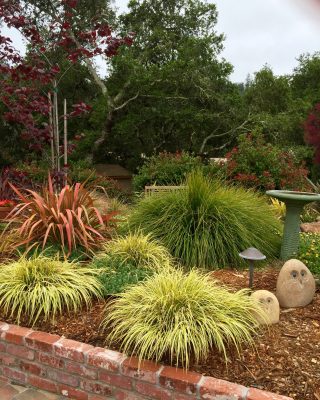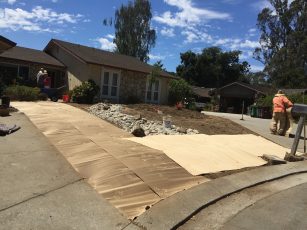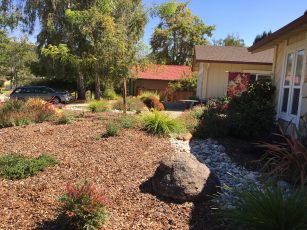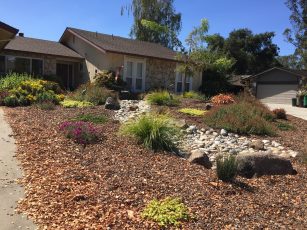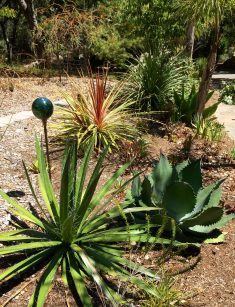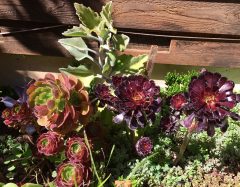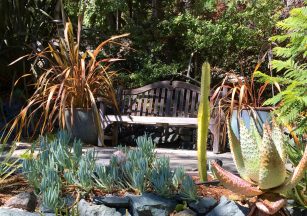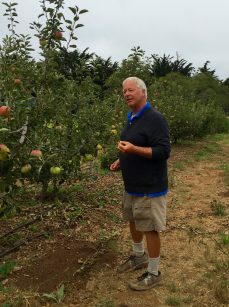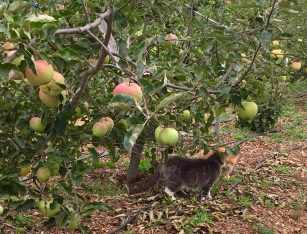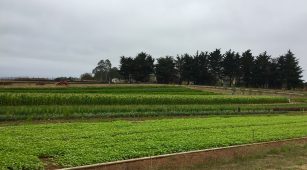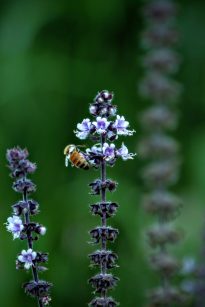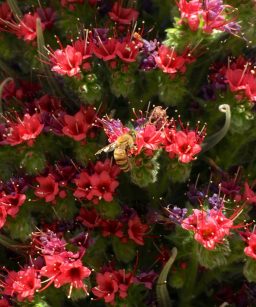More and more of us are embracing the concept of gardening with a sense of place. To garden where you live means accepting that your garden in California is naturally more subdued by fall. Plants that bring color to the garden at this time of year are invaluable. A successful garden is a feeling.
The fall bloomers and ornamental grasses are at their peak right now and thanks to our recent rainfall they are getting a big drink. Many birds are loading up on carbohydrates and fats to provide fuel for their migration. Others will stick around and want to be in the best possible condition for the winter season. In addition to seeds, nuts and acorns, flowers are important in their diets,
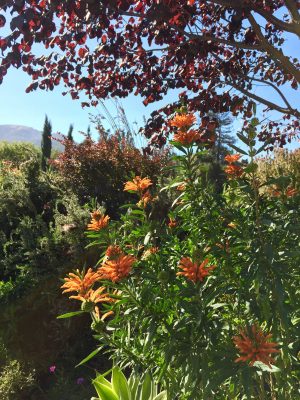
With Halloween almost upon us orange blooming plants like Lion?s Tail look perfect in the autumn garden and gets the attention of birds, bees and butterflies. The scientific name leonotis leonurus translates from the Greek words meaning lion and ear in reference to the resemblance of the flower to a lion?s ear but this perennial shrub has long been called Lion?s Tail in California. A member of the mint family it starts blooming in very early summer and continues through fall. Having very low water needs and hardy down to 20 degrees it?s perfect for a drought tolerant garden.
California fuchsia is also at the height of its blooming season. Starting in the summer and flowering through fall this California native will be covered with orange or scarlet-orange flowers that attract hummingbirds like crazy. A great plant along the path or draping over a rock wall this perennial thrives in areas that might fry other plants. Also known as Epilobium canan or Zauschneria it is in the evening primrose family and native to dry slopes and chaparral especially in California.
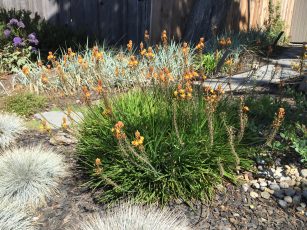
Another good choice for your drought tolerant garden is the long blooming Hallmark bulbine. The Orange Stalked bulbine is a succulent you?ve got to try. Starting in late spring and continuing through fall and often into winter this one foot tall groundcover spreads to four or five feet wide. The orange star-like flowers with frilly yellow stamens form atop long stalks that rise above the foliage. Remove spent flower stalks to encourage reblooming.
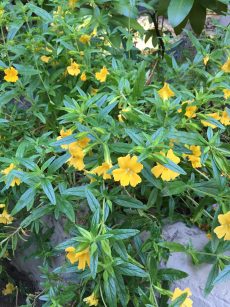
What?s a fall garden without an orange or gold hued mimulus to feed the hummingbirds? Mine haven?t stopped blooming since early summer. Deer resistant and drought tolerant Sticky Monkey flower get the sticky part of their common name from their leaves which are covered with a resinous oil discouraging the larvae of the checkerspot butterfly from dining too greedily.
Orange and blue are opposite on the color wheel so they look fabulous together. Enter the salvias with their mostly blue and purple flowers. From California natives such as salvia clevelandii to Mexican bush sage to Autumn sage there are thousands of varieties on the market. All are deer resistant, gopher resistant, drought tolerant and hummingbird magnets.

